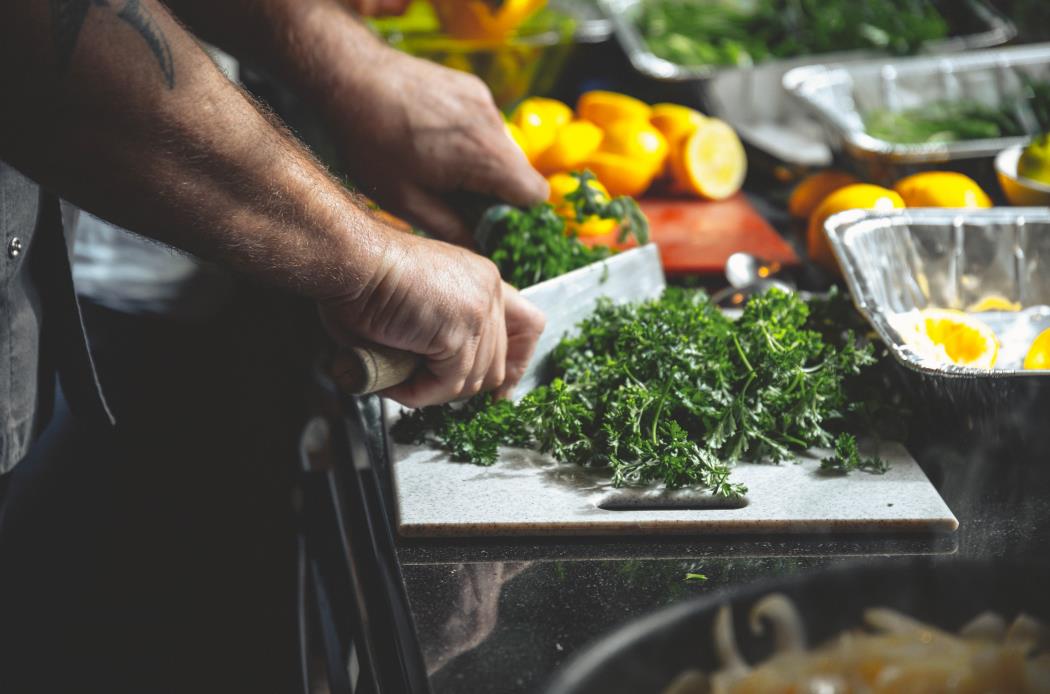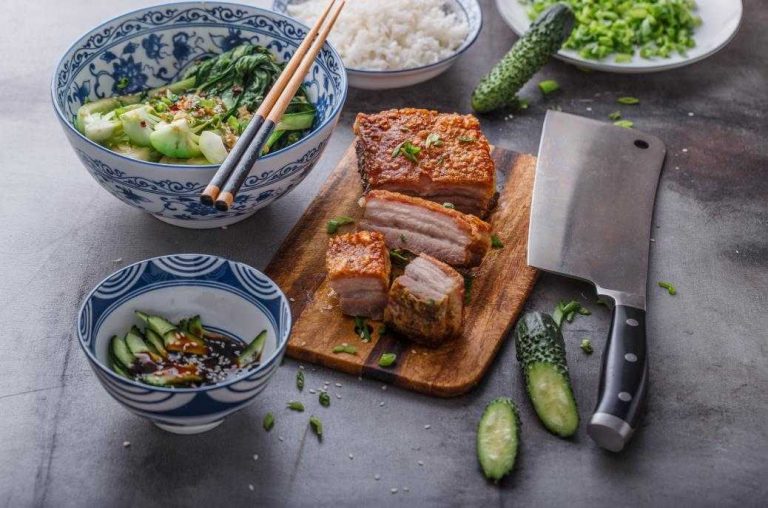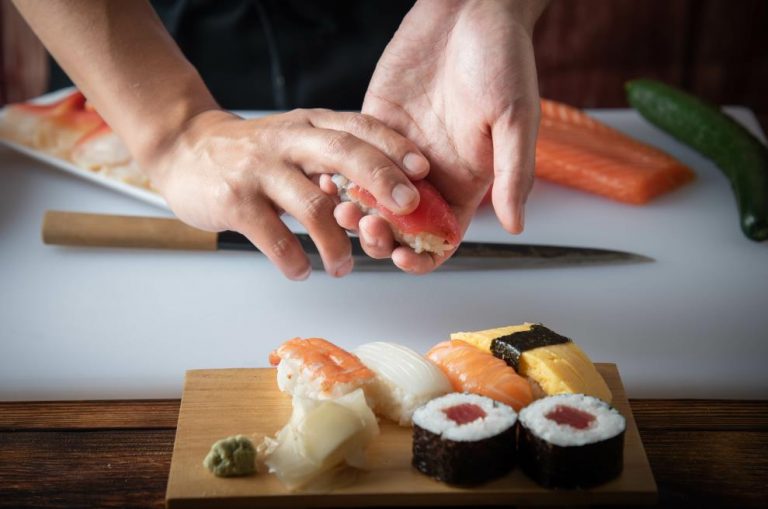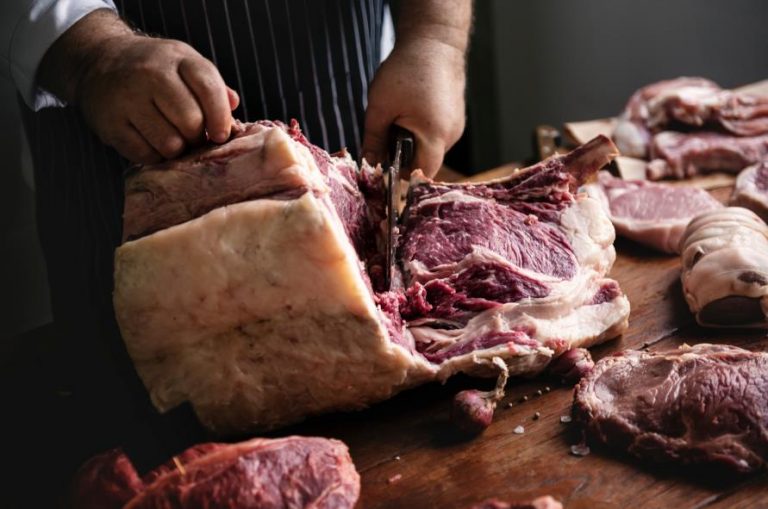Just as the Japanese, German, and French have different kitchen knives, so do the Chinese. Although many refer to the all-purpose, cleaver-like Chinese kitchen knife as the Cai Dao, it’s actually a general term. You can call any kitchen knife Cai Dao in China, as they all fall under it.
Since there isn’t a single Chinese-style kitchen knife, Cai Dao, we’ll cover the most prominent varieties in this article. Here is everything you need to know about the Chinese cleavers.
Types of Cai Dao – Chinese kitchen knives
Whether professional or home, three primary kitchen knives are utilized in Chinese kitchens. These are pian dao, the vegetable knife, gu dao, the meat cleaver, and wen wu dao, the general-purpose chef’s knife.
Let’s take a closer look at each of these knives that are a staple in every Chinese kitchen.
Chinese vegetable cleaver (pian dao)
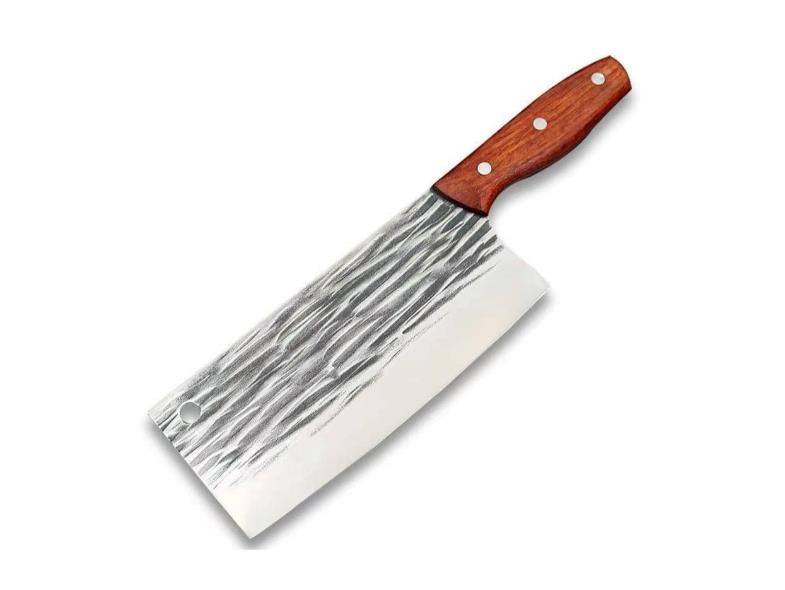
Pian dao is primarily used for chopping up vegetables and fruits. The blade design resembles the Japanese Nakiri but with significant differences.
Widely recognized as the Chinese vegetable cleaver, pian dao has a rectangular shape, with a length to width ratio of about 5:3. The blade is wider than Nakiri, making it appear as a somewhat lengthier cleaver.
This Chinese-style kitchen knife also looks comparable to Chukabocho but has notable differences. The easiest way to tell the difference is to look for the tip. Pian dao‘s tip transitions to a triangle from the spine, whereas Nakiri and Chukabocho have a flat end.
The Chinese vegetable cleaver is on the thicker side than other Japanese kitchen knives with a similar purpose. The blade’s thickness is usually around 4mm, making it suitable for more than just cutting vegetables and fruits. In many ways, it’s a more versatile version of Nakiri that Chinese home cooks utilize for every step of meal preparation.
Features
- The Chinese vegetable cleaver has a rectangular blade design with a 5:3 ratio of length and width.
- With a 4mm blade thickness, it’s sturdier than Nakiri but still fragile than many other all-purpose alternatives.
- The blade’s belly has a curved design, allowing for fast mincing and chopping.
- Pian dao has a sharp, triangular tip that enables the cook to utilize it for making slits, trimming the fat from fillets, and doing other detailed work.
Uses
Most Chinese chefs use this knife for all purposes despite its main use case being chopping vegetables. The blade design may not seem suitable for general work, but most Chinese-style kitchen knives follow a similar shape. This makes a pian dao a familiar kitchen knife to tackle all steps of culinary work to the Chinese.
Although the pian dao – as well as the other Chinese-style kitchen knives in this article – have a cleaver-like design, it has a fragile blade. Dense ingredients should be avoided, let alone bones. Cooks get the most out of this knife by cutting boneless animal protein, fish, vegetables, and fruits.
Overall, this rather multi-purpose kitchen knife is like the Japanese Nakiri but a lot more adaptable. It’s common for cooks to refer to the pian dao as the Chinese chopping knife.
Buy Wholesale Knives and Start Scaling up with Us Today
Contact us and connect with a sales rep to get a free quote.
Chinese meat cleaver (gu dao)
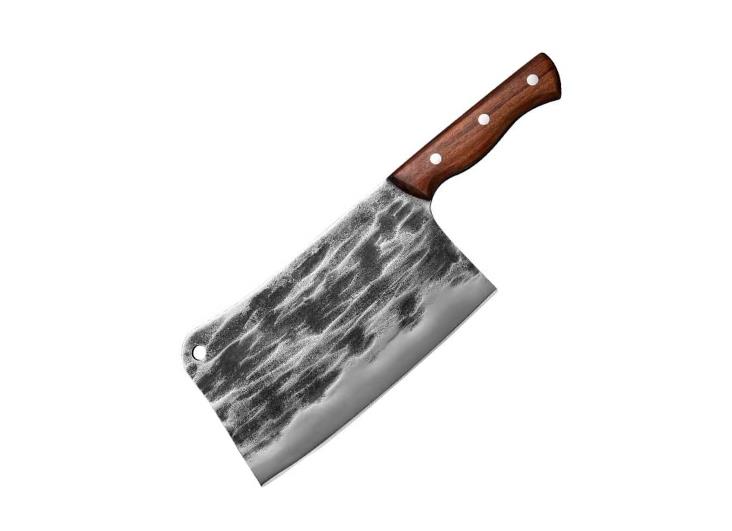
Gu dao is the preferred choice of Chinese cooks for cutting a variety of meats while utilizing it for robust work. The Chinese meat cleaver has a thick blade profile, making it suitable for heavy-duty work. This knife is the go-to for most cooks in China for cutting through dense bones and breaking down poultry.
We can think of the gu dao as the Chinese equivalent of a regular meat cleaver.
Features
- Gu dao is pretty much the same as a western meat cleaver.
- The blade’s surface area is ideal for various tasks, from breaking hard shells to nuts to crushing vegetables.
- The edge isn’t as sharp but incredibly sturdy. This feature ensures it doesn’t chip when cutting dense ingredients with force.
Uses
It isn’t just meat that gu dao is ideal. The thick blade’s sizable surface area allows it to be used for many other tasks. The back of the knife is commonly used for cracking open crab shells to remove the meat and tenderize tough cuts.
Because its edge isn’t as sharp as an all-purpose knife, Gu dao isn’t the ideal knife to make fine slices. This knife is best used for breaking down large slabs and mincing meats to make fresh ground meat and chicken. Since it’s more or less a specialty tool with a specific purpose, it isn’t as common in Chinese households.
Chinese chef knife (wen wu dao)
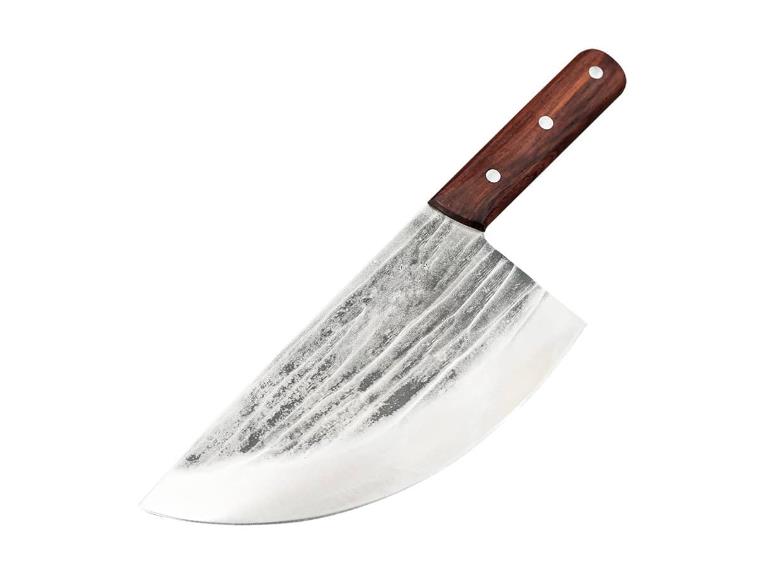
Wen wu dao is the most versatile knife in this article by far, with many use cases in one blade. It has a distinct edge grind. The blade is thin towards the tip, ideal for slicing, and thick around the heel for cutting dense ingredients and bones.
The knife’s spine comes to a triangle tip. In addition to slits, it’s ideal for sticking the end into hard-to-reach places. The blade’s end makes it easier to carve whole poultry, like ducks, and remove connective tissue to cut meat elegantly.
While this edge design is surely intriguing, it’s also more challenging to use. The difficulty of use and the blade requiring the cook to use different sections make wen wu dao less popular with home cooks. This all-purpose kitchen knife is best utilized in a fast-paced kitchen with its flexibility to take down various ingredients.
Undoubtedly, wen wu dao can benefit cooks with its multi-function edge. A cook can go through an entire meal preparation using this knife only, including when doing robust work. Still, cooks looking for something straightforward don’t prefer this knife as much. Pian dao, the vegetable cleaver, is suitable for more people than the wen wu dao.
Features
- The edge has unique grinding. The blade is thin from the belly to the tip, ideal for slicing and dicing. The rest towards the heel is thicker and tougher, perfect for chopping bones and dense ingredients.
- The belly of wen wu dao is relatively flat, but the part used for slicing has a curve. The curved area makes it convenient for chopping and mincing ingredients fast.
Uses
As we were explaining the blade design of the Chinese chef’s knife, the uses became clearer. It’s an all-purpose knife that we can consider a merger between the meat and vegetable cleaver.
The blade’s thinner section is for chopping, dicing, mincing, and slicing delicate ingredients, like vegetables, fruits, and meats. The rest is more for heavy-duty use that otherwise would require a tougher blade than a typical chef’s knife.
Even though wen wu dao offers many uses, it isn’t as popular in Chinese kitchens. Most chefs, at home or in restaurants, pick the vegetable cleaver over it.
Cai Dao vs. Japanese cleaver
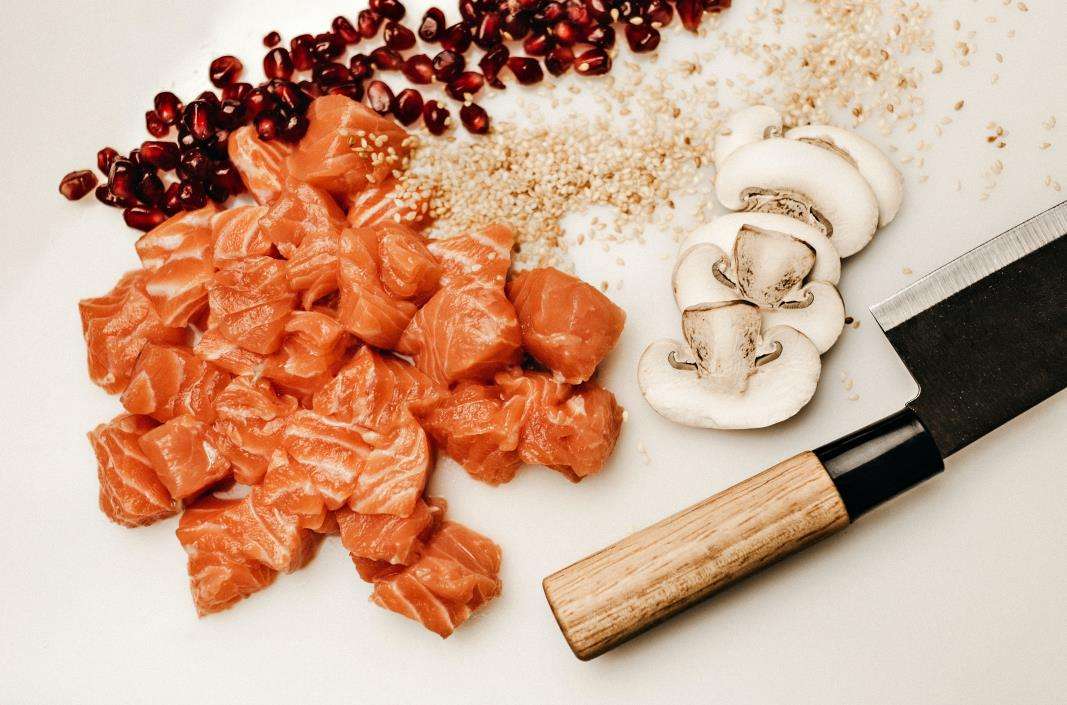
Cai Dao is somewhere between the western and Japanese cleavers. However, there is a notable difference between what’s used as a cleaver in Japan and China.
Chukabocho, the Japanese cleaver, derives from the Chinese Cai Dao. As Japan remained largely closed throughout its history and eating beef wasn’t as popular, they didn’t need cleavers.
So, the Japanese adopted the Cai Dao and developed their distinct cleaver. Considering that Japanese cuisine mainly requires finely sliced ingredients, Chukabocho is more equipped for this than heavy-duty work. Chukabocho isn’t as strong as most Cai Dao knives but can slice and chop ingredients finely.
Cai Dao vs. western cleaver
The design and steel used for Cai Dao and western meat cleavers aren’t so far off from each other. Both knives are primarily made from tough stainless steel. The most notable differences are the holes in western cleavers and blade features. Almost all western meat cleaver have a hole, but cai dao can be made without it.
Except for the gu dao, the meat cleaver, Cai Dao has a thinner and lighter blade. This is one of the primary reasons these knives are for all purposes. General work wouldn’t be ideal if the Cai Dao had a similar weight and thickness.
Brands that succeed in selling Cai Dao
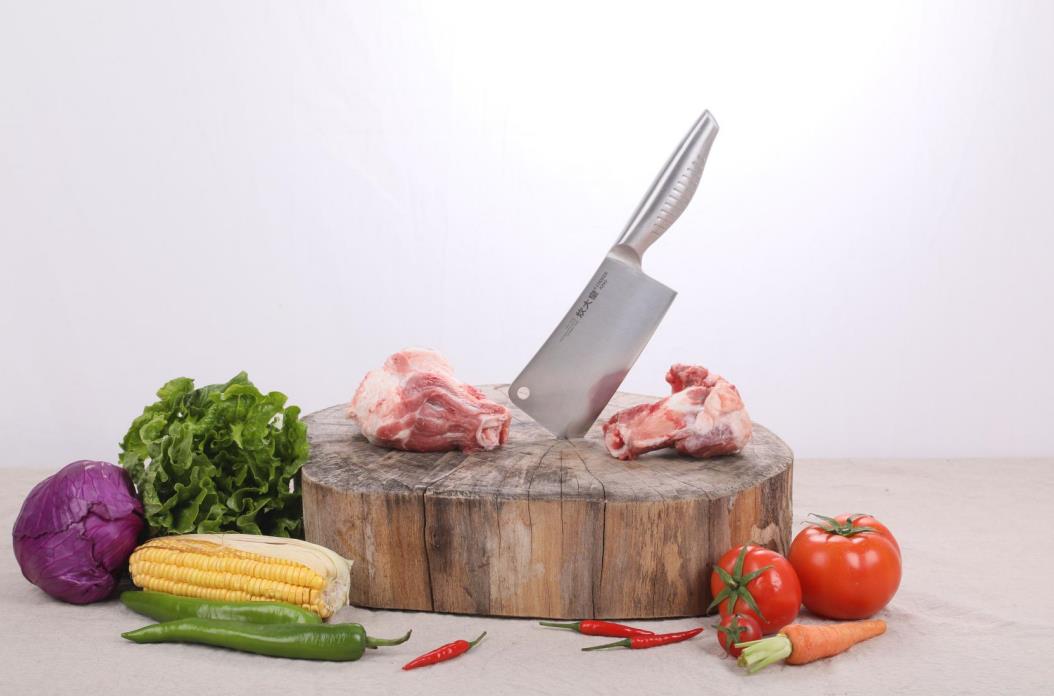
CCK, also known as the Chan Chi Kee, has a variety of Cai Dao knives, including all three types listed in this article. Cooks that are unfamiliar with the size of Cai Dao may find them intimidating. They have smaller options to help cooks feel more comfortable operating with them.
Shibazi Cleavers is a prominent manufacturer and seller of Cai Dao. The company’s products are quite popular in the United States and more affordable than those of CCK. They mainly sell their knives under SHI BA ZI ZUO.
Buy Wholesale Knives and Start Scaling up with Us Today
Contact us and connect with a sales rep to get a free quote.
Discover other Chinese-style kitchen knives
Cai Dao, mainly pian dao, gu dao, and wen wu dao, are just a few popular Chinese-style kitchen knives. In addition to these, there are dedicated chopping knives, boning knives with a distinct blade design, and more.
You can check out the Chinese kitchen knives from our catalog. We provide bulk purchase for the knives manufactured, as well as other OEM, private label, and dropshipping services. Learn the minimum order quantity, materials, and available services for every knife from us and get a quote now.
